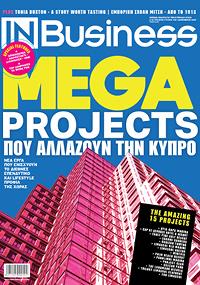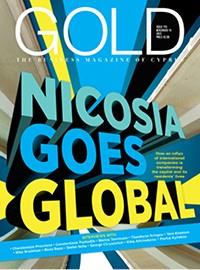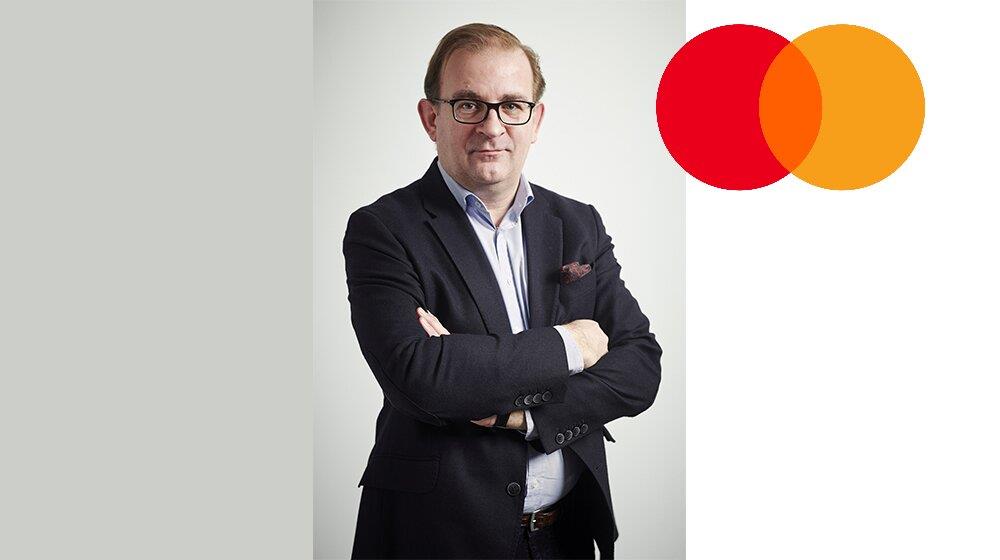Imagine visiting a store by virtual reality, browsing the selection, being informed not only of a particular item’s cost but also its carbon footprint and then being offered ways to offset it. Imagine being able to “try on” the clothing and be warned that you already have a similar piece in your wardrobe before completing your purchase – and all this simply by looking at a virtual screen.
This is just one of Mastercard’s ideas on the future of shopping, presented as part of a recent media showcase attended by GOLD at the company’s European Tech Hub in Dublin. The Hub could be considered as the physical manifestation of the global payment technology solutions giant’s commitment to blazing the trail when it comes to how we will be paying for goods and services in the future. It also proved to be the perfect place to speak to Mastercard Europe President Mark Barnett about some of the company’s latest innovations and his thoughts on the future of payments.
Speaking to GOLD after the showcase, Barnett revealed, among other things, that Mastercard does not intend to leave small businesses and SMEs behind as it advances into a future of payments through virtual stores and other emerging technology. “Small businesses have been less digital than big business for a long time but, during the pandemic, they caught up. So now, according to a piece of research work done by BCG (Boston Consulting Group) and Dutch payments company Adyen, 80% of SMEs look at a business platform every day. This is how digital they are,” Barnett observed. While some of these business platforms are more general, others are specific – for a nail bar, a coffee shop or a dentist’s office, for example. This created an opportunity to embed financial services within the platforms, allowing users to get paid, pay suppliers and manage inventory. As a result, smaller companies will not necessarily have to compete with retail giants when it comes to selling their wares through virtual stores one day. “SMEs won’t have to scale themselves to invest in complex virtual reality but, via the platform providers that serve these SMEs and via their banking partners and various fintechs, I think they will be much more digitally included in the future,” Barnett said.
Noting that Mastercard currently sits at the centre of an ecosystem with 100 million merchants on one side, 3 billion consumers on the other and 20,000 financial institutions in the middle, Barnett pointed out that most retailers in Europe already accept card payments. Emerging technology, such as systems allowing merchants’ mobile phones to become acceptance devices at the tap of a customer’s card, phone or smartwatch is making the process even simpler and potentially opening even more acceptance points for this kind of payment. But how is the sector being impacted by consolidation and fragmentation of members?
“There might be a bit of consolidation amongst the financial institutions in the middle for sure, but fragmentation is a good thing for competition because it creates innovation, diversity and choice,” Barnett observed, adding, “Too much fragmentation creates inefficiency, though. So, it is hard to say what the exact right balance is, but I would say we are not too far off. And we have a very efficient payment system in Europe.”
While some studies suggest that investors are choosing to put their cash in climate tech rather than fintech, Mastercard continues to invest in both, among several areas of interest. “We opened our sustainability lab in Stockholm last year and that is really looking at ways that we, along with our partners, can create products and services that drive the environmental agenda,” Barnett noted. A more specific example is the company’s investment in Swedish fintech Doconomy, which is developing the Mastercard Carbon Calculator to help people better understand the environmental impact of their purchases. “This technology effectively calculates the carbon footprint of a purchase,” Barnett explained, adding that while not perfect (it currently does not have access to the very granular detail of a product), it comes remarkably close. Customers can also offset the impact of their purchases through innovative technology, such as systems allowing them to donate a specific sum or even round off transactions, with the surplus going to environmental causes, among other options. These causes include Mastercard’s Priceless Planet Coalition, through which the company is committed to restoring 100 million trees by 2025. Another recently announced initiative, meanwhile, will ensure that all cards issued on the Mastercard network are made from more sustainable materials by 2028.
As technology races ahead, however, consumer concern over potential security breaches and threats is also growing. But as bad actors in the sector are increasingly deploying recent technology, so too are legitimate stakeholders. Barnett noted that innovative technology, such as artificial intelligence, has been helping keep people’s hard-earned money safer for several years now. Indeed, self-learning AI already monitors requested payments, giving them a relevant fraud score in a matter of seconds so that banks and similar institutions are in a better position to allow a transaction to go ahead or not. As technology such as quantum computing makes password security ever stronger, staying technologically current is crucial.
Barnett is confident that customers are ready for all the change that is already here or on its way. “Changing consumer behaviour is a long-term thing but think of the shift from cash to card: that has been happening over 50 years. It’s accelerated more recently and the pandemic accelerated it a little bit more. But in some countries, it is already almost total. You will not see a banknote in Stockholm! Even bank branches no longer hold banknotes,” he elaborated. “You get to a tipping point. For example, in the UK, when we went live with contactless payments on the Underground and people knew they could make a £2 transaction using their card, they did not feel about embarrassed about using it to buy a cup of coffee. And, once you get past that tipping point, then people think, ‘Actually, do I need to carry all these coins and notes around with me when I can tap for everything?’ Consumers will only change their behaviour if it benefits them to do so – if it either provides them additional security or additional convenience. Card payments do both.”
The media showcase attended by GOLD included expert addresses – including some via hologram – and discussions, as well as a tour of the Hub, followed Mastercard’s release of the company’s latest ‘Signals’ report ‘The Future of Payments’, exploring nine key, innovative trends that are reshaping the future of payments and commerce to usher in ‘The Next Economy.’ The full report can be viewed here: http://innovationinsights.mastercard.com/signals-the-future-of-payments.
This interview first appeared in the May edition of GOLD magazine. Click here to view it.









